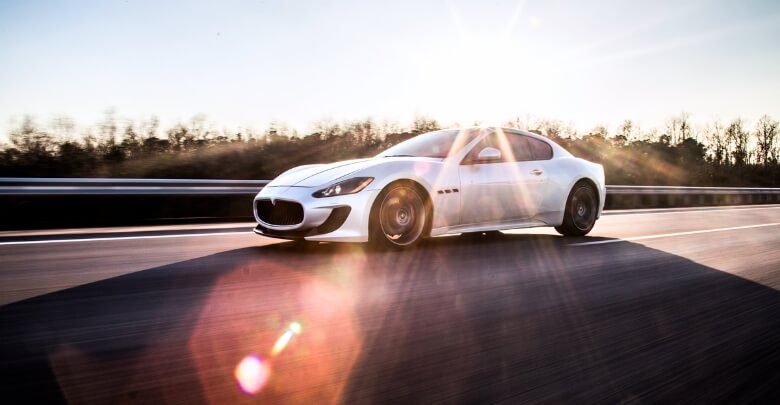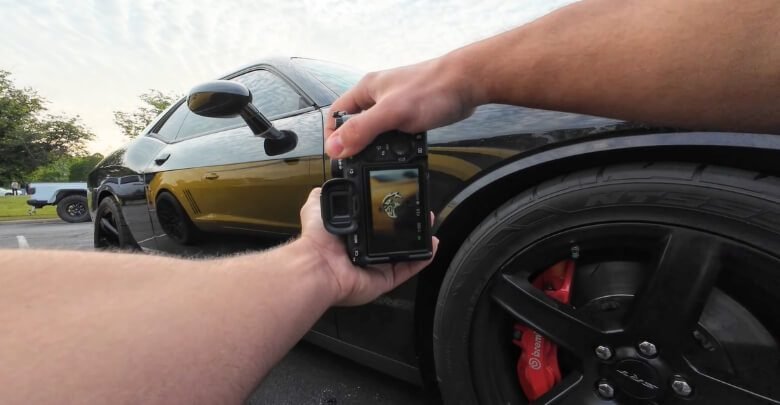Visual appeal has a significant impact on a customer’s decision when it comes to car photography. Having a good camera is not enough to capture a perfect image of a vehicle. Skills and attention to detail are also required.
Unfortunately, even the most experienced photographers can fall prey to common pitfalls that detract from the beauty of the car being showcased. If you’re looking to refine your skills or just starting out, it’s essential to know what to avoid.
We explore the “Top 10 common car photography errors to avoid” to help you capture professional-looking shots that truly capture the spirit of the vehicle. Read on to learn more about these typical mistakes and how you can avoid them.
Significance of Car Photography
Car photography goes beyond just taking pictures; it captures a vehicle’s design and engineering marvel. It turns simple images into powerful selling tools, influencing potential buyers’ perceptions and decisions. Effectively shot car photos can greatly enhance online and offline marketing materials.

The automotive industry, in particular, greatly benefits from high-quality images. These images are further enhanced with skilled car photo editing, highlighting the car’s best features without losing its authenticity. This expertise ensures that each photo tells a compelling story, appealing directly to the viewer’s desires.
Consumers often make buying decisions based on the visual content they see online, which has become indispensable in today’s digital world. Having a car well photographed can help it stand out on crowded digital platforms. This visual appeal is crucial for dealerships and individual sellers aiming to make a lasting impression.
Does Car Photography Need Attention to Detail?
Yes, attention to detail is crucial in car photography. This precision ensures that every aspect of the vehicle is showcased beautifully. Minor details can significantly influence the overall impact of the image.

Capturing the essence of a car requires focusing on small features like the texture of the leather or the shine of the paint. These elements highlight the vehicle’s quality and condition, attracting potential buyers. Overlooking these details can result in images that do not truly represent the car’s value.
Also, meticulous attention makes a professional photograph stand out from an amateur one. In this process, angles and lighting are adjusted so that unwanted reflections are avoided and the car’s curves are enhanced. The more carefully considered the shot, the more appealing and effective the photograph will be in marketing the vehicle.
Top 10 Common Car Photography Errors to Avoid
The art of car photography combines technique with art, capturing automobiles in a way that makes them more desirable to potential buyers. Mastering this craft involves more than just snapping pictures; it requires avoiding common pitfalls. Here are ten common errors to avoid when taking photos of cars:

1. Photographing at Poor Angles
The right angle is essential to highlighting the vehicle’s design. Poor angles can flatten car features, making it less appealing. Experiment with different perspectives to find the best angles. Always consider the car’s unique lines and curves when selecting an angle.
2. Wrong Camera Settings
A car photo can be ruined by using inappropriate camera settings. Ensure your settings match the lighting and the color of your vehicle. Manual settings offer better control than auto modes for desired results. Check and adjust your ISO, aperture, and exposure before shooting.
3. Messing with Shutter Speed
Shutter speed affects motion capture. A slow shutter can blur a stationary car, implying movement where none exists. Fast shutter speeds are great for capturing cars in motion without blurring. Adjust the shutter speed based on whether the car is moving or static.
4. Remember the RAW Format
Shooting in RAW captures more detail than JPEG. RAW files provide greater post-processing flexibility. This format allows for extensive adjustments without loss of quality. Always use RAW for professional-quality results and maximum editability.
5. Lighting is Everything
Lighting can make or break a car photograph. Natural light is generally best, providing soft, diffuse illumination. Avoid the harsh midday sun which can create unwanted shadows and highlights. Early morning or late afternoon are ideal for softer, more flattering light.
6. Not Choosing ND Filters
Neutral density (ND) filters manage light exposure. They allow for wider apertures or slower shutter speeds in brighter conditions. ND filters are especially useful for motion blur in bright daylight. They help maintain control over the photo’s exposure and depth of field.
7. Not Making Use of Reflectors
Reflectors bounce off light, softening or eliminating harsh shadows. They are crucial for outdoor shoots to manage natural light. Use reflectors to highlight specific features of the car. Reflectors are portable and easy to position as needed.
8. Relying Too Much on Photoshop
Overdependence on editing can compromise photo authenticity. Aim to capture the best image in the camera first. Photoshop should enhance, not overhaul, your car photographs. Rely on Photoshop to edit basic car photos, such as adjusting the contrast, brightness, and color.
9. Ignoring the Background
A disorganized or distracting background can detract from your photo’s subject. Always check what’s behind your car before shooting. Select backgrounds that enhance the vehicle’s appearance without overwhelming it. Simple, unbiased backgrounds often make the car stand out best.
10. Skipping Post-Processing
Neglecting post-processing is a missed opportunity to fine-tune your photos. Even subtle edits can enhance the car’s appearance and highlight its features. Use editing to correct color balance, sharpen details, and adjust lighting. Remember, effective post-processing should refine, not radically alter the original image.
By avoiding these common errors, you can enhance your car photography skills and produce images that truly showcase the beauty and detail of each vehicle.
Enhancing the Look of Your Car Photographs – Tips and Tricks
A perfect car photograph requires more than just pointing and shooting. It’s about showcasing the vehicle’s best features and enhancing its appeal. Here are some tips and tricks to make your car photos look better:

Optimize Your Lighting
Effective lighting can transform your car photography. Utilize natural light for soft, appealing shadows and highlights. Position your car to make the most of sunrise or sunset hours. Indoor shoots benefit from adjustable artificial lighting setups.
Experiment with Angles
Unique angles can enhance your car images and add drama. Shoot low to bring out the car’s beauty and stance. Explore different perspectives like front, side, and three-quarter views. Each angle highlights various features of the car.
Focus on Details
Capturing small details can create a strong impact. Focus on elements like the grille, wheels, or interior craftsmanship. These shots can tell a compelling story about the car’s luxury or sportiness. Use a macro lens for close-up, detailed images.
Post-Processing Enhancements
Post-processing is the key to polishing photos. Adjust exposure and contrast to bring out the best in your shots. Use color correction to ensure the car’s paint looks vibrant. Keep the edits subtle to maintain the image’s natural beauty.
Use Props and Backgrounds Wisely
Props and backgrounds should complement the car, not distract from it. Choose simple, clean backgrounds that enhance the vehicle’s appearance. Props can add context or reinforce the car’s branding. Ensure everything in the frame highlights the car.
These methods can significantly enhance the visual impact of your car photographs, making them more appealing and effective for any purpose.
Frequently Asked Questions About Top 10 Common Car Photography Errors to Avoid
Here are some of the FAQs and their relevant answers for a clear concept of the top 10 common car photography errors to avoid:
Why is It Important to Avoid Common Car Photography Errors?
Avoiding common errors helps ensure your car photos are professional, engaging, and highlight the vehicle’s features effectively, which can attract more buyers or enthusiasts.
How Can I Avoid Reflections in My Car Photos?
To avoid reflections, use polarizing filters, adjust your shooting angle, and consider the position of the sun or artificial light sources.
How Can I Prevent Overexposure or Underexposure in My Car Photos?
Use the camera’s exposure compensation feature, bracket exposures, and use a histogram to monitor exposure levels.
What Are the Benefits of Using a Wide-Angle Lens in Car Photography?
A wide-angle lens can capture more of the car’s surroundings, create a sense of space, and make the car appear more dynamic.
What Are Some Common Composition Mistakes to Avoid in Car Photography?
Avoid centering the car in the frame, including distracting elements in the background, and neglecting to fill the frame with the car.
How Can I Enhance the Color and Contrast in My Car Photos?
Use editing software to adjust color temperature, saturation, and contrast, but avoid over-editing to maintain a natural look.
What Are the Benefits of Shooting During the Golden Hour for Car Photography?
The golden hour provides soft, warm light that can enhance the appearance of the car, reduce harsh shadows, and create a pleasing atmosphere.
Final Thoughts
Mastering car photography requires more than just basic skills; it requires an eye for detail and an understanding of your tools. When it comes to portraying a car’s best features, every step matters, from picking the right angle to fine-tuning the camera settings.
The “Top 10 common car photography errors to avoid” identifies essential mistakes that can degrade the quality of your photos. Make use of lighting, post-processing, props, and background strategically to improve your results.
This will help you produce eye-catching, professional-quality images without falling into these common pitfalls, enhancing a vehicle’s marketability.